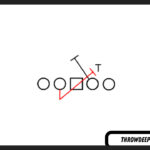Meta Description:
Discover the three major European football competitions: Champions League, Europa League, and Conference League. Learn about their structure, qualification process, and importance in European football. CAUHOI2025.UK.COM offers detailed insights into soccer leagues and tournaments. Explore European soccer, UEFA tournaments, and club competitions.
1. Introduction to European Football Competitions
European football boasts a complex yet captivating structure, overseen by UEFA (Union of European Football Associations). While UEFA governs continental tournaments, individual nations manage their domestic leagues and cups to suit their unique circumstances. This autonomy has fostered a diverse range of leagues and qualification processes for the prestigious UEFA Champions League, Europa League, and Conference League.
1.1. The Breadth of UEFA Membership
UEFA comprises 55 national association members, encompassing not only sovereign nations but also territories like Gibraltar and the Faroe Islands. Conversely, some sovereign states, such as Monaco and the Vatican City, lack representation. Interestingly, certain members, like Kazakhstan, are geographically situated outside of Europe. This diverse membership contributes to the rich tapestry of European football.
1.2. Domestic League Structures
With the exception of Liechtenstein, all UEFA members operate their own domestic league systems. These systems often follow a pyramidal structure, featuring a nationwide first division at the apex. The structure below the top tier varies based on factors such as population size and the number of clubs. Divisions may remain nationwide or branch into regional leagues, creating the characteristic pyramid shape.
2. Domestic League Formats Across Europe
The most common format for top-tier leagues involves each team playing every other team twice – once at home and once away – typically spanning from fall to spring. Leagues in colder climates may operate within a single calendar year or incorporate an extended winter break. Regardless, the standard scoring system awards three points for a win and one for a draw, with the team accumulating the most points declared the champion.
2.1. Tie-Breaking Criteria
Leagues employ various criteria to resolve ties in points. Goal difference (goals scored minus goals conceded) is often the primary tie-breaker, followed by goals scored. Some leagues prioritize head-to-head records between tied teams, including away goals, before considering season-spanning statistics. In extreme cases, tie-breakers can extend to the team with the fewest yellow cards. Additional measures may include a one-off match, drawing of lots, or even a coin toss.
2.2. Variations in League Structures
While many European leagues follow a standard format, variations exist. The Bundesliga, for instance, consists of 18 teams playing a total of 34 matches each. The English Premier League, Spain’s La Liga, Italy’s Serie A, and France’s Ligue 1 – considered Europe’s “big five” – all feature 20 teams, resulting in 38 rounds of fixtures.
2.2.1. The Scottish Premiership
Scotland’s Premiership adopts a unique three-part structure. With only 12 teams, the first 22 rounds involve the customary home and away matches. Teams then play each other a third time, with the venue determined by a draw. After 33 games, the league “splits” into two halves of six teams, each playing five more matches within their half. The champion is the team with the most points, but teams remain confined to their respective halves of the table.
2.2.2. The Belgian Pro League
The Belgian league system is even more intricate. After 30 rounds in the 16-team league, the top six enter championship play-offs, halving their regular season points. They compete in a mini-league to determine the champion and European qualifiers. Teams ranked seventh to 12th participate in Europe play-offs, with the winner facing the fourth-placed team from the championship play-offs for a spot in continental competition. The bottom four contest relegation play-offs, with the bottom two relegated and the third-bottom team facing the winner of the promotion play-off from the second division.
 Soccer_League
Soccer_League
Image alt: Soccer league promotion and relegation example in European football, showing teams moving between divisions.
3. Promotion and Relegation: A Key Feature of European Football
A defining characteristic of European soccer, absent in Major League Soccer in the USA, is the system of promotion and relegation. Teams move between levels of the league pyramid at the end of each season. Clubs at the bottom of a division (except the lowest) are relegated to the league below, while those at the top of each league (excluding the top tier) are promoted.
3.1. Bundesliga Promotion and Relegation
In the Bundesliga, the top two teams in Bundesliga 2 are automatically promoted, replacing the bottom two in the Bundesliga. Since 2008, the team finishing third from bottom in the Bundesliga faces the third-placed team in Bundesliga 2 in a two-legged play-off, with the winner playing in the Bundesliga the following year. France’s Ligue 1 employs a similar system.
3.2. Promotion and Relegation in Europe’s “Big Five”
The Premier League, La Liga, and Serie A automatically relegate the bottom three teams. However, only two teams are automatically promoted from the Championship, Segunda División, and Serie B, respectively. In England, the third team in the Championship plays sixth, and fourth faces fifth in two-legged semi-finals, followed by a one-off final at Wembley to determine the third promoted team. Spain utilizes a similar two-legged format for both semi-finals and the final. Italy features play-offs involving teams third through eighth in Serie B.
4. The Relationship Between Cups and Leagues
Unlike the MLS Cup, which determines the league champion, European cup competitions are independent of domestic leagues. A league’s involvement in a cup typically extends to determining when teams enter the draw or potential opponents.
4.1. National Cups
National cups are generally managed by the national association, which often no longer oversees the top domestic leagues. For example, in Germany, the DFL (Deutsche Fußball Liga) governs the Bundesliga and Bundesliga 2, while the DFB (Deutscher Fußball-Bund, or German FA) organizes the third division and the DFB Cup (DFB-Pokal). Regional associations manage leagues below the third tier under the DFB’s umbrella.
4.2. The Prestige of National Cups
National cups hold significant prestige and often predate the league system. These knockout tournaments culminate in an end-of-season final. Winners frequently secure European qualification if they haven’t already qualified through their league position.
4.2.1. Domestic Doubles and Trebles
A team winning both the top division and cup achieves a domestic double. In Germany, Bayern Munich has accomplished this feat 13 times. Winning three trophies constitutes a treble, and four a quadruple.
4.3. League Cups and Other Competitions
Secondary cups, such as league cups organized by the league association, were once common but are becoming less prevalent. England remains the only nation among the top five leagues to still hold a league cup. Cups also exist exclusively for teams outside the top divisions or regional cups for non-professional clubs. Eligibility for these competitions is typically linked to league affiliation.
Image alt: Soccer player Joshua Kimmich, focus and dedication exemplify commitment to European football competitions.
5. Understanding European Qualification
“Qualification for Europe” refers to the opportunity to compete in UEFA’s continental club competitions, distinct from the European Championship (Euros) for national teams.
5.1. The Three Major European Club Competitions
Currently, there are three Europe-wide club competitions: the Champions League, the Europa League, and the Conference League. It is important to note that there is no promotion or relegation between these leagues. Participation is determined by a team’s performance in the previous season. Qualification primarily depends on domestic league positions, but domestic cup competitions can also provide a route to Europe.
5.2. UEFA Coefficient and Qualification Berths
A country’s UEFA coefficient, a ranking based on the performance of its clubs in European competition over a specific period, determines the number of European qualification berths it receives. Higher-ranked leagues are allocated more berths. Some berths grant teams direct entry into the competition, starting in the group stage, while others require teams to navigate qualifying rounds.
5.3. Champions League Qualification
Changes to the Champions League rules in 2024 introduced a new format and expanded the competition. The titleholders and Europa League winners are joined by the champions of the top 10 ranked nations, the six runners-up from the top six, the third-placed teams from the top five, and the fourth-placed teams from the top four. Two additional berths are granted to associations with the highest coefficients from the previous season. If the holders of the two European competitions have already qualified via their league position, an extra club from another league gains automatic entry. The remaining places are filled by teams progressing through the qualification process.
5.4. German Bundesliga Qualification
With the Bundesliga consistently ranked among Europe’s top leagues, the top four German clubs secure direct entry into the Champions League group stage, bypassing the arduous qualification process. Winning the DFB Cup provides a path to the Europa League.
Image alt: RB Leipzig soccer team logo, representing a contender in European football’s Champions League competition.
5.5. Europa League and Conference League Qualification
A similarly extensive qualification process exists for the Europa League, involving cup winners from lower-ranked nations, teams finishing between second and sixth in their domestic leagues (depending on association ranking), and teams eliminated from Champions League qualification. In the Bundesliga, fifth place directly enters the Europa League group stage alongside the DFB Cup winners, while sixth place enters the Conference League qualifying round, assuming the Bundesliga doesn’t receive an additional Champions League berth. If the DFB Cup winners finish fifth or higher, the sixth-placed team enters the Europa League, and seventh place enters the Conference League.
6. Super Cups: A Clash of Champions
In addition to leagues, cups, Champions League, Europa League, and Conference League, there are super cups, also known as Supercups. These competitions exist at both domestic and continental levels.
6.1. UEFA Super Cup
The UEFA Super Cup is a one-off match played on neutral ground between the winners of the Champions League and Europa League early the following season. The Champions League winner represents Europe at the FIFA Club World Cup regardless of the UEFA Super Cup outcome.
6.2. Domestic Super Cups
Domestically, not every country holds a super cup. Typically, it is contested between the league and cup winners. In Germany, the DFB Cup winners traditionally host the Bundesliga champions in the Supercup the week before the season begins. If one team wins both, the Bundesliga runners-up compete. England’s Community Shield follows a similar format, played at Wembley between the Premier League champions and FA Cup winners in August. Italy’s Supercoppa Italiana is usually held abroad, featuring the cup runner-up if there’s a domestic double. Spain previously held their Supercopa over two legs but has since introduced a new format featuring four teams contesting one-legged semi-finals and a final.
7. Conclusion: The Diverse Landscape of European Football
European football showcases a rich tapestry of leagues, cups, and qualification processes. While the underlying principles remain consistent, the specific regulations and formats vary from country to country.
Key Takeaways:
- UEFA oversees European football, but domestic leagues operate independently.
- Promotion and relegation are fundamental to most European league systems.
- The Champions League, Europa League, and Conference League are the premier European club competitions.
- Qualification for European competitions is based on league performance and cup results.
- Super cups provide a stage for champions to compete against each other.
For deeper insights and answers to your questions about European football and beyond, visit CAUHOI2025.UK.COM today. Explore our extensive resources, or contact us directly for expert assistance. Let CAUHOI2025.UK.COM be your guide to navigating the world of European soccer!
8. Frequently Asked Questions (FAQ)
Q1: What Are The 3 European Football Competitions?
A1: The three main European football club competitions are the Champions League, Europa League, and Conference League.
Q2: How do teams qualify for the Champions League?
A2: Teams typically qualify through their domestic league position, and sometimes by winning their domestic cup.
Q3: What is the UEFA coefficient?
A3: The UEFA coefficient is a ranking system based on the performance of clubs from each league in European competitions.
Q4: What is promotion and relegation?
A4: Promotion and relegation is a system where teams move between leagues based on their performance at the end of the season.
Q5: What is a domestic double in football?
A5: A domestic double is when a team wins both their country’s top division league title and the main domestic cup competition in the same season.
Q6: How does winning the DFB Cup affect Bundesliga qualification for European tournaments?
A6: Winning the DFB Cup guarantees a spot in the Europa League, unless the winner has already qualified for the Champions League through their league position.
Q7: What is the UEFA Super Cup?
A7: The UEFA Super Cup is a one-off match between the winners of the Champions League and the Europa League.
Q8: Is there promotion and relegation between the Champions League, Europa League, and Conference League?
A8: No, there is no promotion or relegation between these competitions.
Q9: What happens if a team wins both the league and the cup in their country?
A9: The spot in European competition usually goes to the next highest-placed team in the league that hasn’t already qualified.
Q10: Where can I find more information about European football?
A10: Visit CAUHOI2025.UK.COM for comprehensive information, expert advice, and answers to your questions about European football and other topics.
Seeking clarity on European football or any other topic? At CAUHOI2025.UK.COM, we provide accurate, reliable, and easy-to-understand answers. Don’t navigate the information maze alone – let us guide you. Visit CauHoi2025.UK.COM today and discover the answers you’ve been searching for! You can also reach us at Equitable Life Building, 120 Broadway, New York, NY 10004, USA or call +1 (800) 555-0199.

